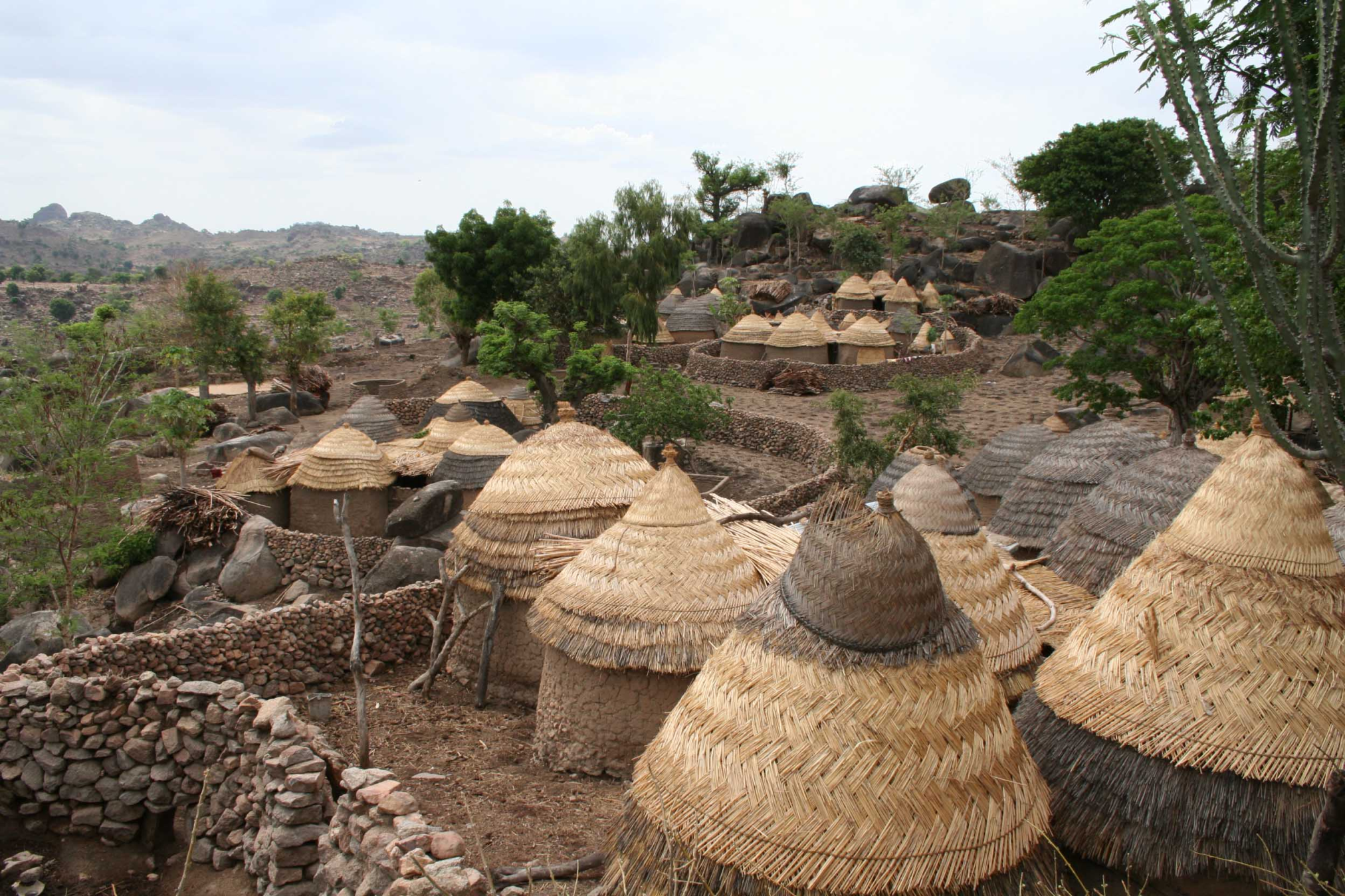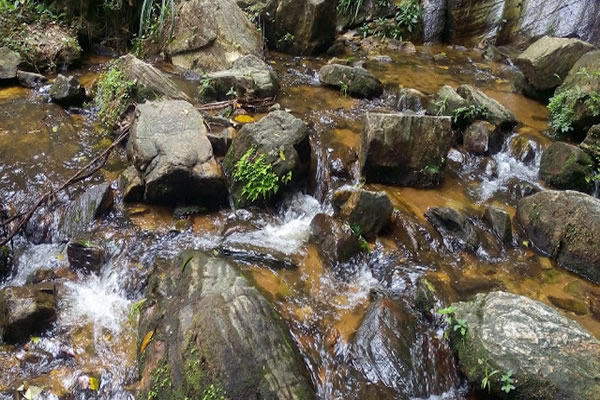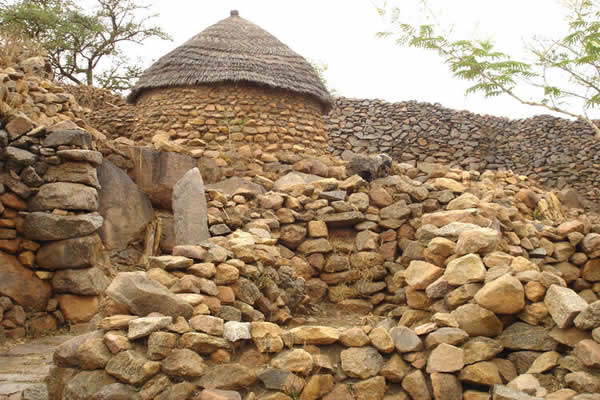Nigeria has 2 World Heritage Sites, namely:
- Sukur Cultural Landscape, Adamawa State
- Osogbo Sacred Grove, Osogbo, Osun State
Sukur Cultural Landscape
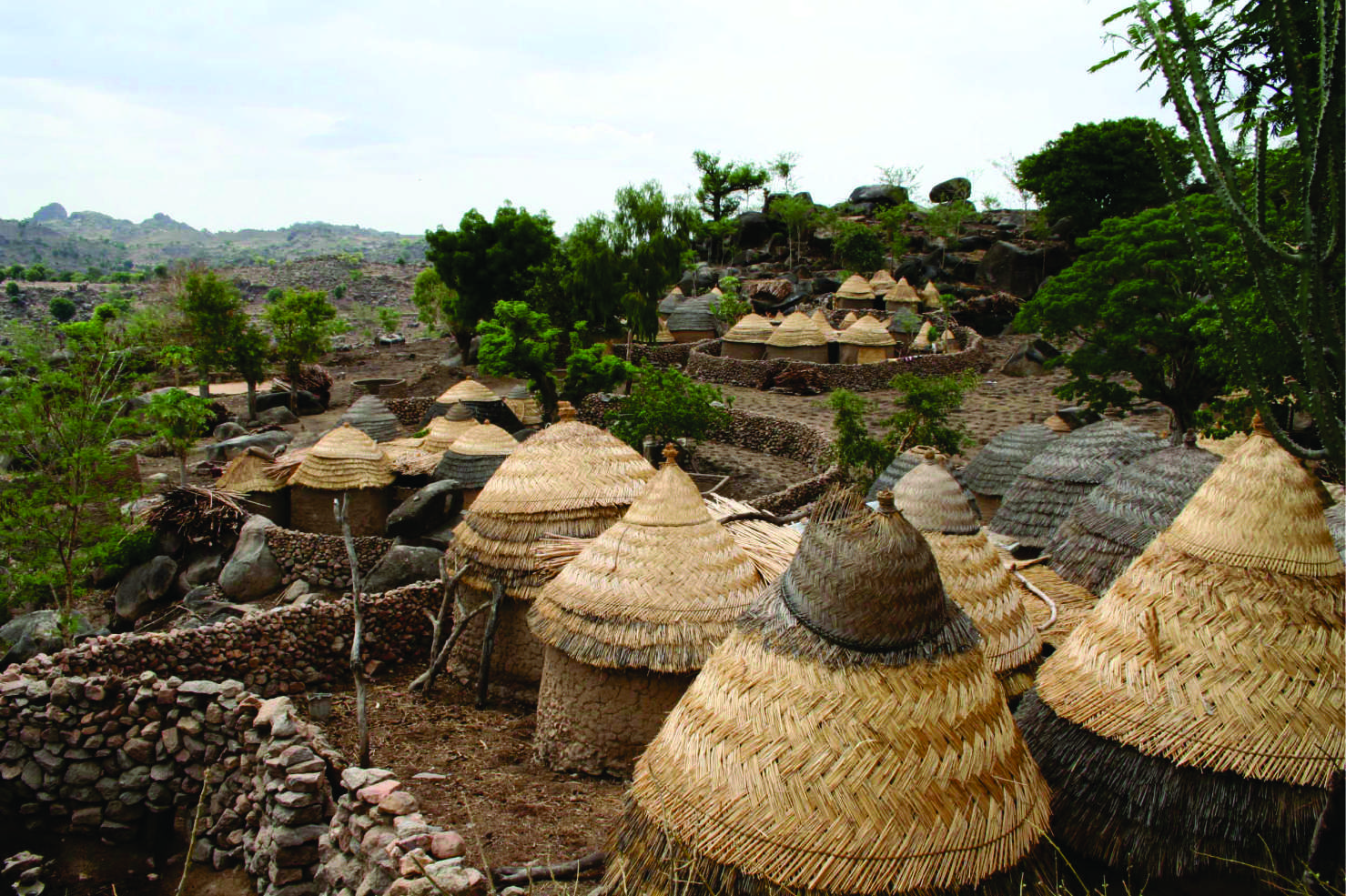
Sukur Cultural Landscape is a UNESCO World Heritage Site located on a hill above the village of Sukur in the Adamawa State of Nigeria.
Its UNESCO inscription is based on the cultural heritage, material culture, and the naturally-terraced fields.
Sukur is Africa’s first cultural landscape to receive World Heritage List inscription.
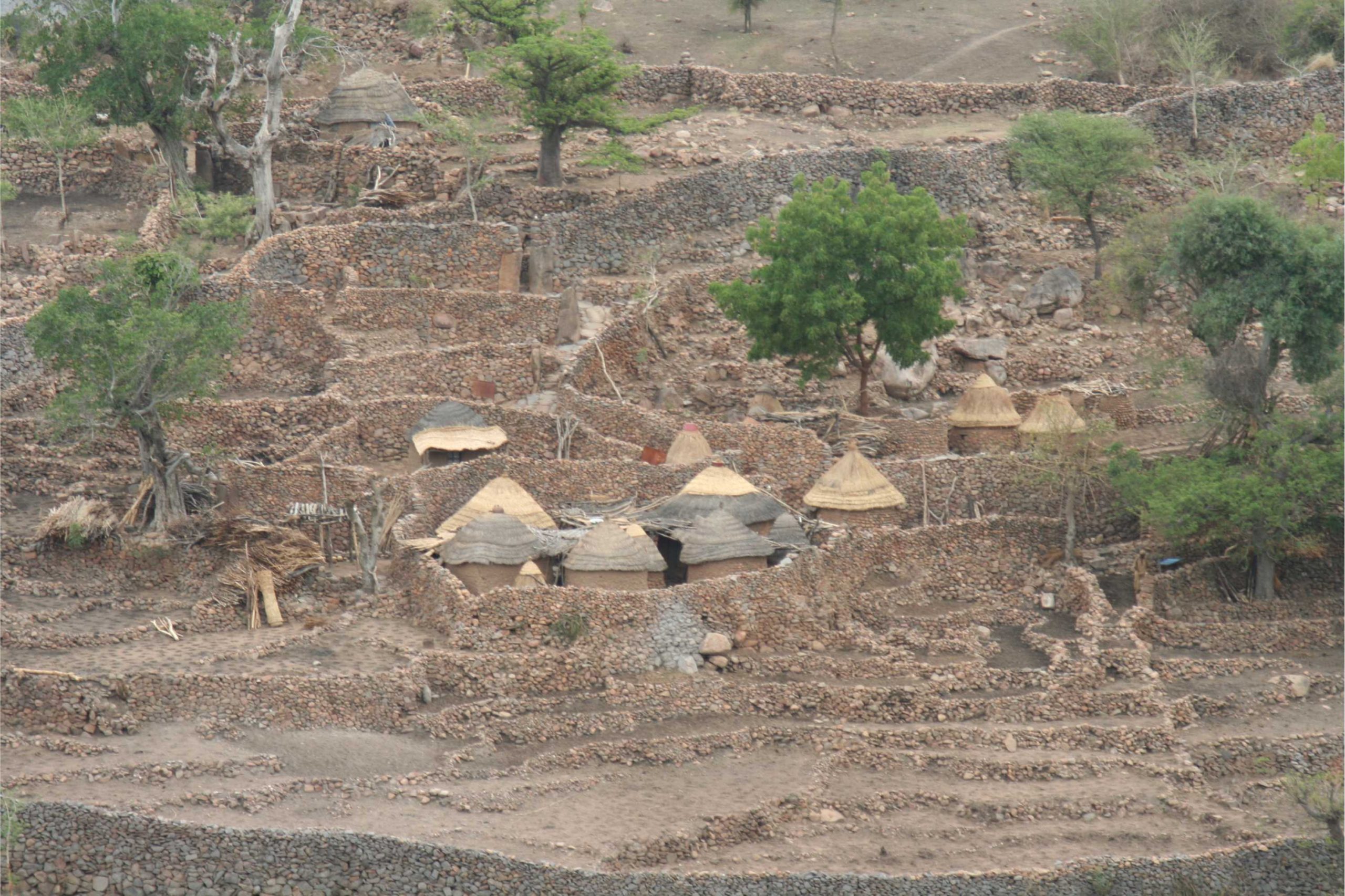
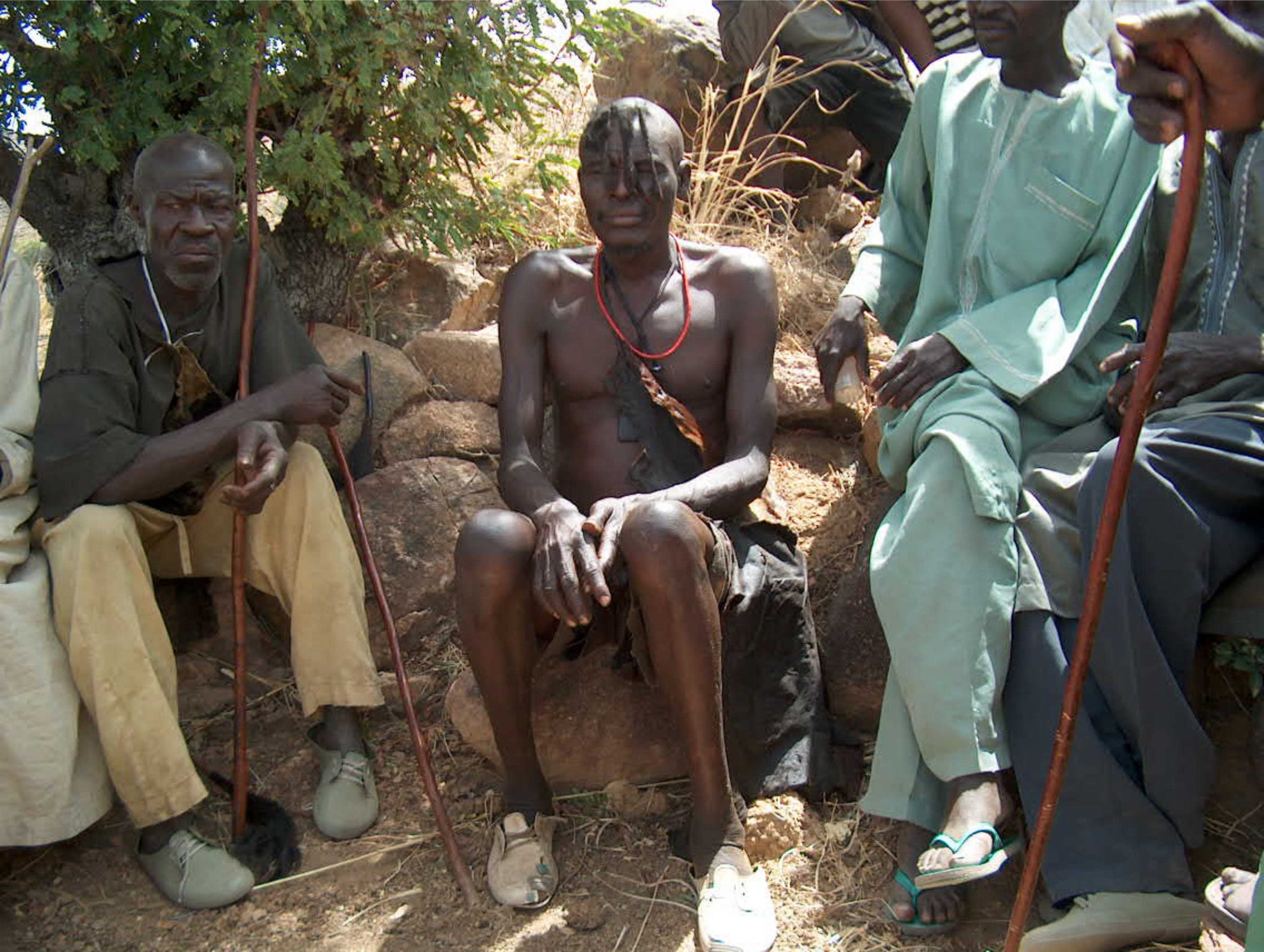
Sukur is located in Madagali local government area of Adamawa state of Nigeria along Nigeria/ Cameroon border, some 290 km from Yola, the Adamawa state capital of north eastern Nigeria. It is a hilltop settlement which stood at an elevation of 1045 m. The total land area covered by the site is 1942.50 ha with core zone having 764.40 ha and the buffer zone 1178.10 ha respectively. Sukur is an ancient settlement with a recorded history of iron smelting technology, flourishing trade, and strong political institution dating back to the 16th century.
The landscape is characterized by terraces on the farmlands, dry stone structures and stone paved walkways.The terraced landscape at Sukur with its hierarchical structure and combination of intensive and extensive farming is remarkable. In addition, it has certain exceptional features that are not to be found elsewhere, notably the use of paved tracks and the spiritual content of the terraces, with their ritual features such as sacred trees.
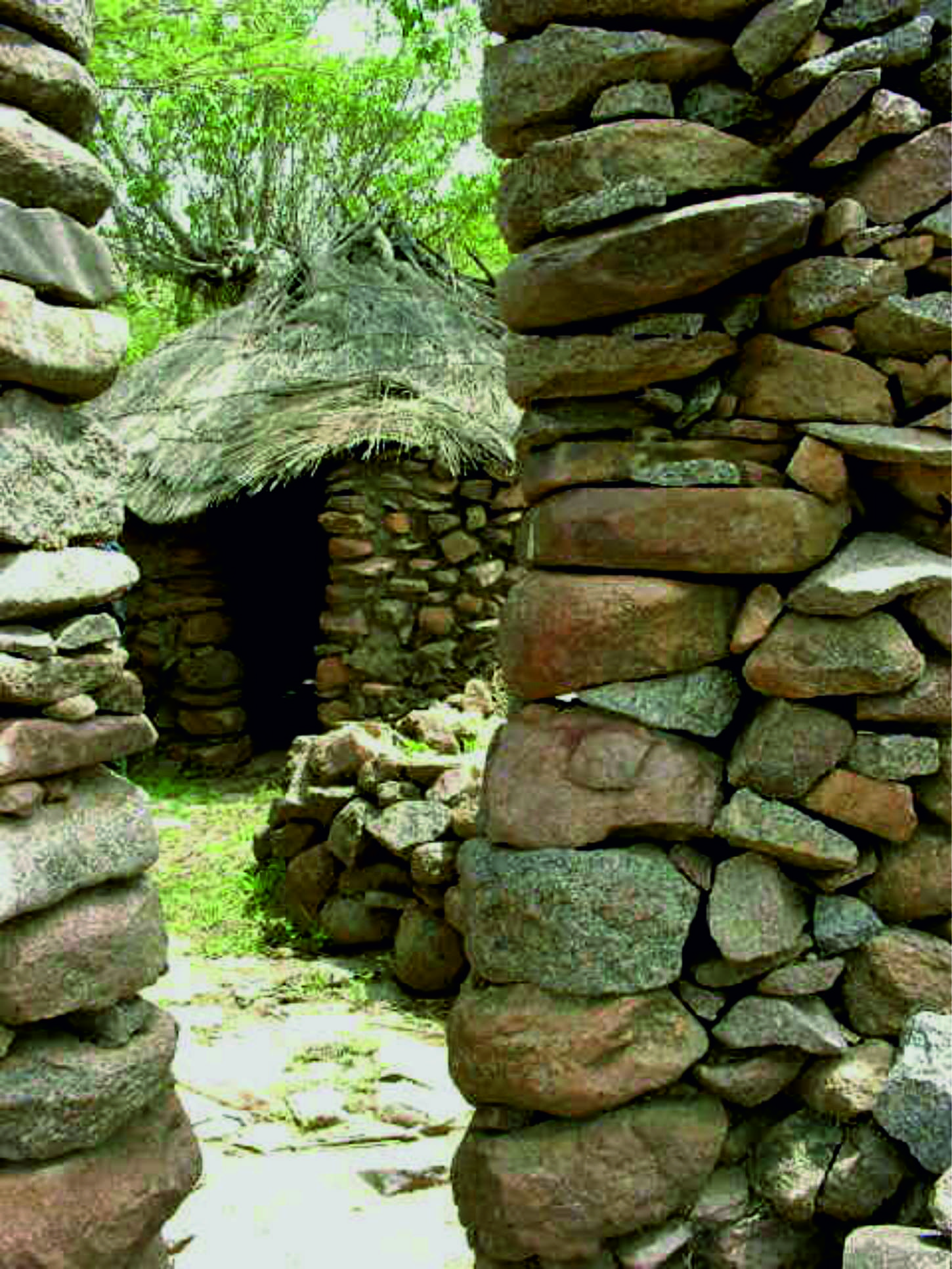
The revered position of the Hidi as the political and spiritual head of the community is underscored by the magnificent dry stone architectural work of his palace, in and around which is a concentration of shrines, some ceramic. The villages situated on low lying ground below the Hidi Palace have their own characteristic indigenous architecture. Among its features are dry stone walls, used as social markers and defensive enclosures, sunken animal (principally bull) pens, granaries, and threshing floors. Groups of mud walled thatched roofed houses are integrated by low stone walls f considerable social and economic importance are the wells..
These are below-ground structures surmounted by conical stone structures and surrounded by an enclosure wall. Within the compound are pens where domestic animals such as cattle and sheep are fattened, either for consumption by the family or for use as prestige and status symbols used in gift and marriage exchanges.
The remains of many disused iron-smelting furnaces can still be found. These shaft-type furnaces, blown with bellows, were usually sited close to the houses of their owners. Iron production involved complex socio-economic relationships and there was a considerable ritual associated with it.
Iron Age relics found in the form of furnaces, ore, and grindstones at the site have been established to be of pre-Sukur existence. There are also some finds from the neolithic period. The recent history is traced to the Dur dynasty of the 17th century. The Dur established the region as a major supplier of raw material for iron manufacture to north-eastern Nigeria; this was perpetuated to the first decade of the 20th century. From 1912 to 1922 Sukur was ravaged by the invasions of Hamman Yaje, the Fulbe Lamido (chief) of Madagali. These wars resulted in the decline of iron smelting till 1960, a period which witnessed people migrating to the plains situated towards north and south of Sukur.
Its inscription by UNESCO, done under the Criteria of iii, v and vi in 1999, is based on the cultural heritage of the Hidi’s Palace complex and village, material culture, and the natural terraced fields, which are in an intact condition. These aspects are cited in the citation which states it as “The cultural landscape of Sukur is eloquent testimony to a strong and continuing cultural tradition that has endured for many centuries.”

Since inscription in 1999, all physical remains have been properly conserved by the National Commission for Museums and Monuments in collaboration with Sukur community. Annual restoration work has been carried out using traditional construction materials. Along with shrines and other sacred places, the Hidi Palace Complex is properly maintained because they are currently in use.
Domestic farmlands are continually being expanded with the creation of stepped level benches adapted to hill farming. The age long tradition of communal labour is still used to maintain paved walkways, gates, graveyards, homesteads and house compounds.①
Osogbo Sacred Grove, Osogbo
Osun-Osogbo Sacred Grove is a sacred grove along the banks of the Osun River just outside the city of Osogbo, Osun State, Nigeria.

The Osun-Osogbo Grove is several centuries old and is among the last of the sacred forests that once adjoined the edges of most Yoruba cities before extensive urbanization. In recognition of its global significance and its cultural value, the Sacred Grove was inscribed as a UNESCO World Heritage Site in 2005.
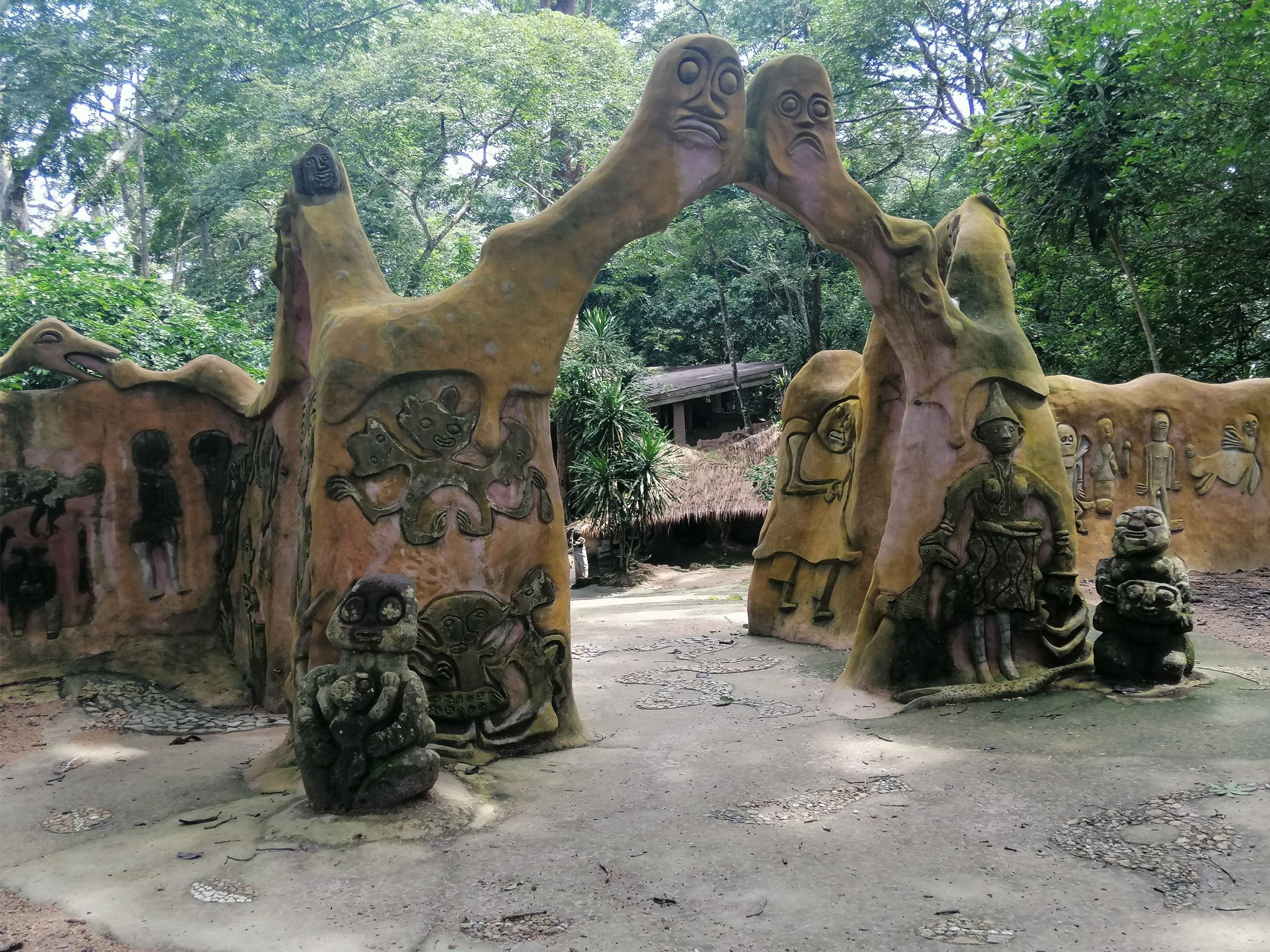
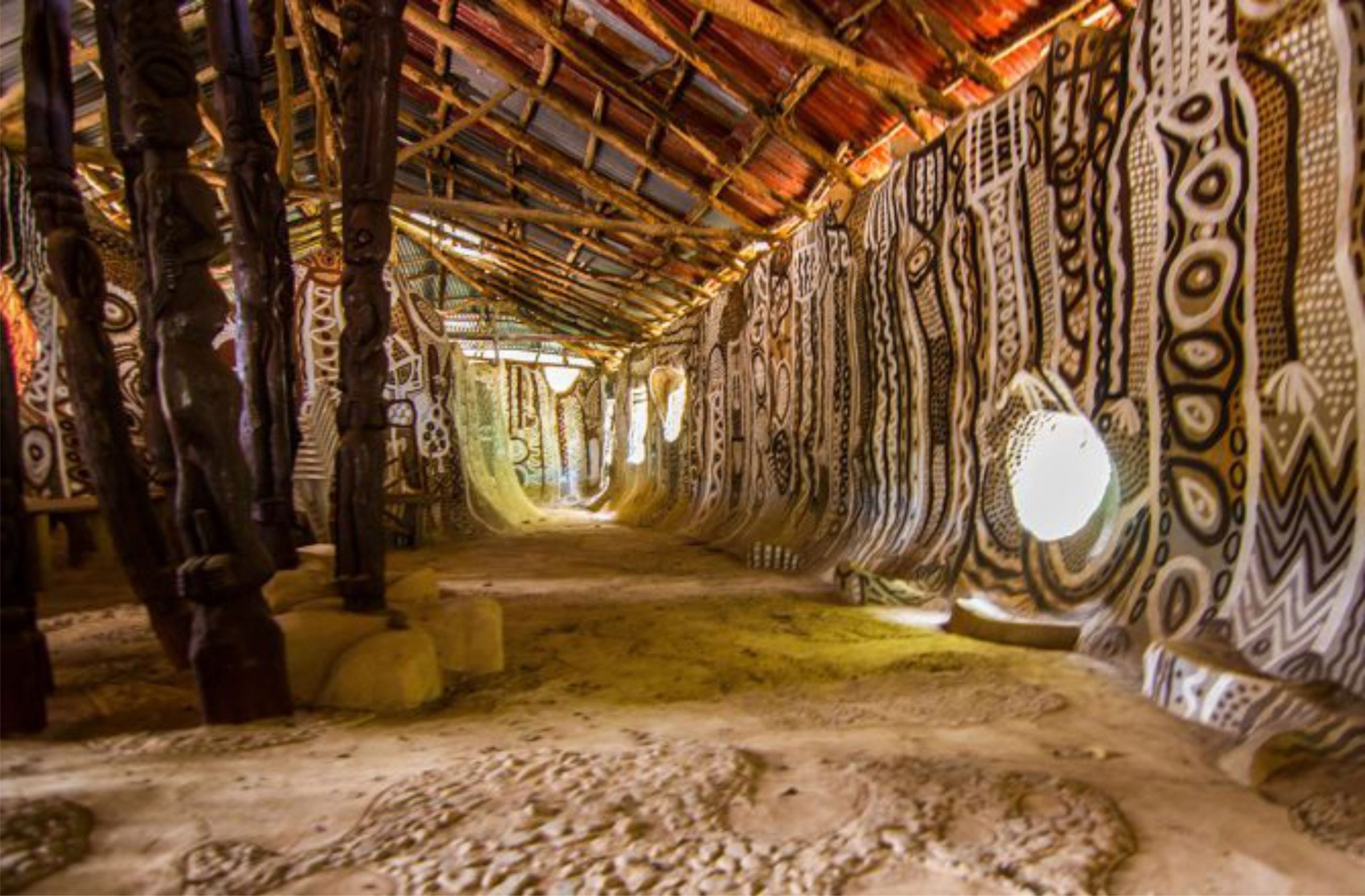
Every year, the Osun-Osogbo Festival is celebrated in the month of August at the Grove. The festival attracts thousands of Osun worshippers, spectators and tourists from all walks of life.
In modern times, August is a month of celebration for the people of Osogboland that includes the traditional cleansing of the city and the cultural reunion of the people with their ancestors, the founders of the Osogbo Kingdom.
The Osun-Osogbo Festival itself is a two-week-long programme. The traditional cleansing of Osogbo is called ‘Iwopopo’, which is followed after three days by the lighting of the 500-year-old sixteen-point lamp called ‘Ina Olojumerindinlogun’. Then comes the ‘Iboriade’, an assemblage of the crowns of the past rulers, the Ataojas of Osogbo, for blessings.

The Festival culminates in a procession to the shrine in the sacred grove where a large crowd builds up. Drumming, dancing, musical performing, wearing of elaborate costumes, speaking of the Yoruba language, recitation of praise poetry, and so on add pomp and colour to the proceedings. This event is led by the sitting Ataoja of Osogbo along with a ritualized performer called the Arugba and a committee of priestesses, who reenact the very first meeting between Oluwatimilehin and Yeye Osun. Arugba is played by a young woman of a kingly lineage and offers the sacrifice to the deity.
The festival is of immense benefit to the tourism sector of Nigeria. It enables the community to sell its culture to tourists coming from both within the country and from all over the world.
The Osun-Osogbo festival also serves as a strong unifying factor in Osogboland, as irrespective of the different social, economic, religious and political convictions of the people, they all come together annually to celebrate the goddess.
Sacred groves used to be found near every Yoruba settlement, but their disappearance over time has made Osun-Osogbo an important reference point for Yoruba identity and the Yoruba diaspora. The historic landscape remains a place of worship and plays host to an annual festival, but by the time it was included on the 2014 World Monuments Watch it faced a number of modern challenges. The rapid growth of the city of Osogbo was causing pressure on land use that was affecting the area around the site. Additionally, the Osun River was becoming increasingly polluted and bush fires posed a continuing threat to the sacred area. The Osogbo community is strongly attached to the site, and Nigerian heritage authorities are leading efforts to raise awareness about these challenges through community activities.
The Osun-Oshogbo Sacred Grove is one of the vast undisturbed areas of land in Africa. Fishing, farming and hunting are forbidden on the 75 hectares of sacred land. The sacred forest captures the potency of Mother Nature in her fullest glory. This is evidenced by the rare species of antelopes, monkeys and other exotic animals that can be seen strutting around the grove, enjoying occasional visitors who come to see the artistic beauty and also enjoy the traditional splendour of the sacred forest.
The Sacred Forest is one of the few spots in the country where well-preserved, undisturbed forestry lies side by side with strong cultural and traditional values.
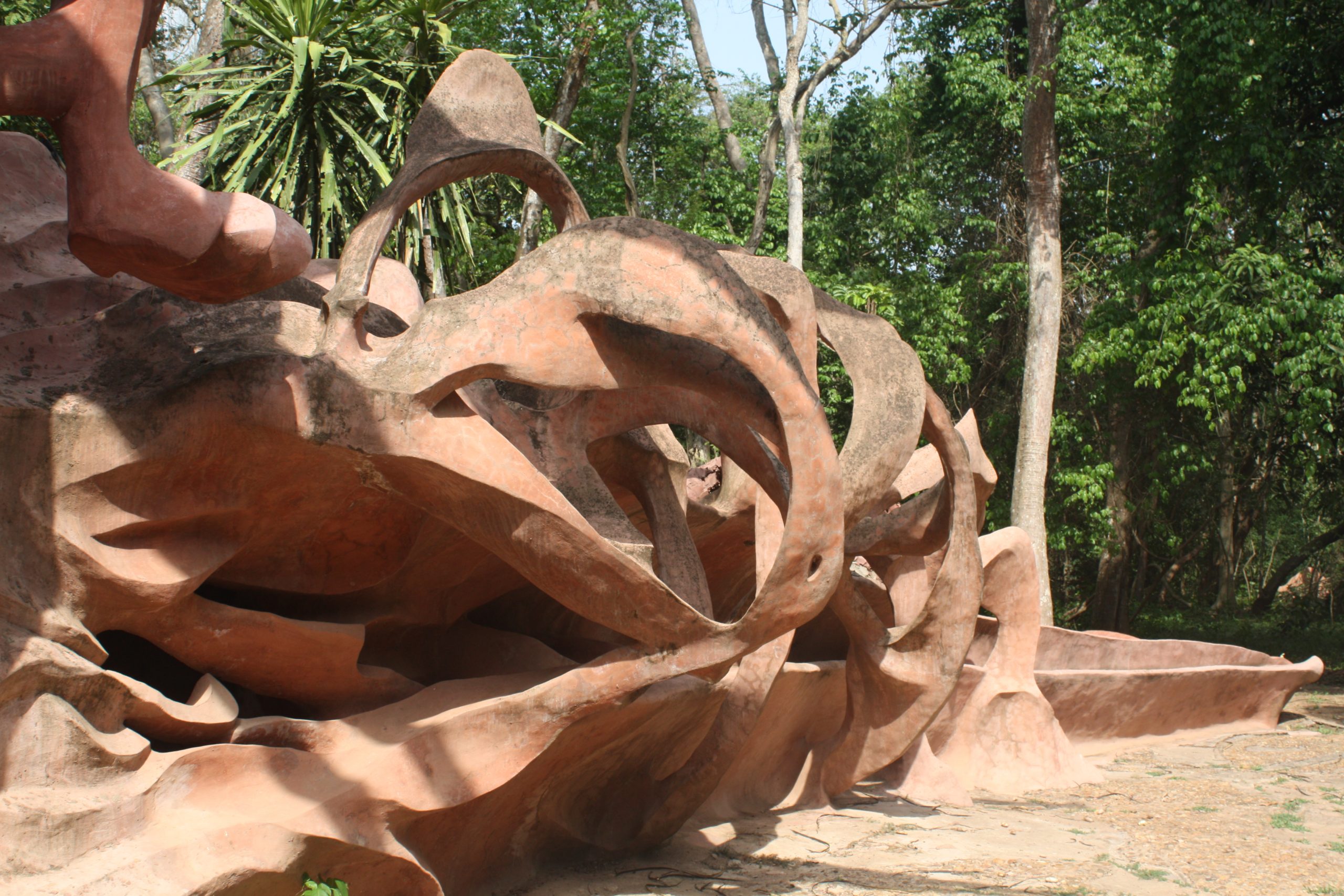
The mystery of the Osun-Oshogbo Grove is captured in the brilliant legacy Susanne Wenger left us; and more than that, the blueprint that she created years ago is being carefully preserved by her adopted children, and the school of artists she trained. Constant restoration and preservation of the sacred grove is championed by the ‘The Susanne Wenger Adunni Olorisha Trust’, an NGO saddled with the responsibility of looking after the legacy of Susanne Wenger.②
References: ① Sukur Cultural Landscape – National Commission for Museums and Monuments ② Osun Osogbo Sacred Grove – National Commission for Museums and Monuments
